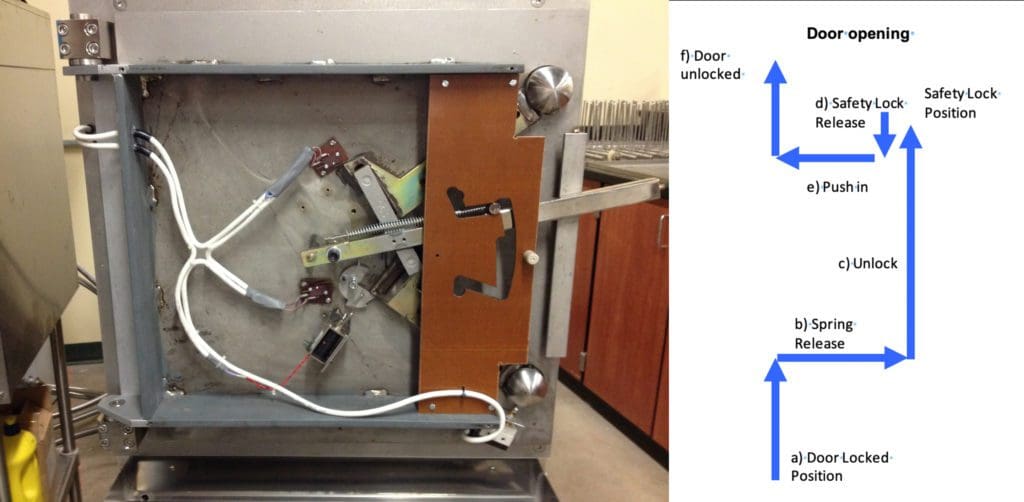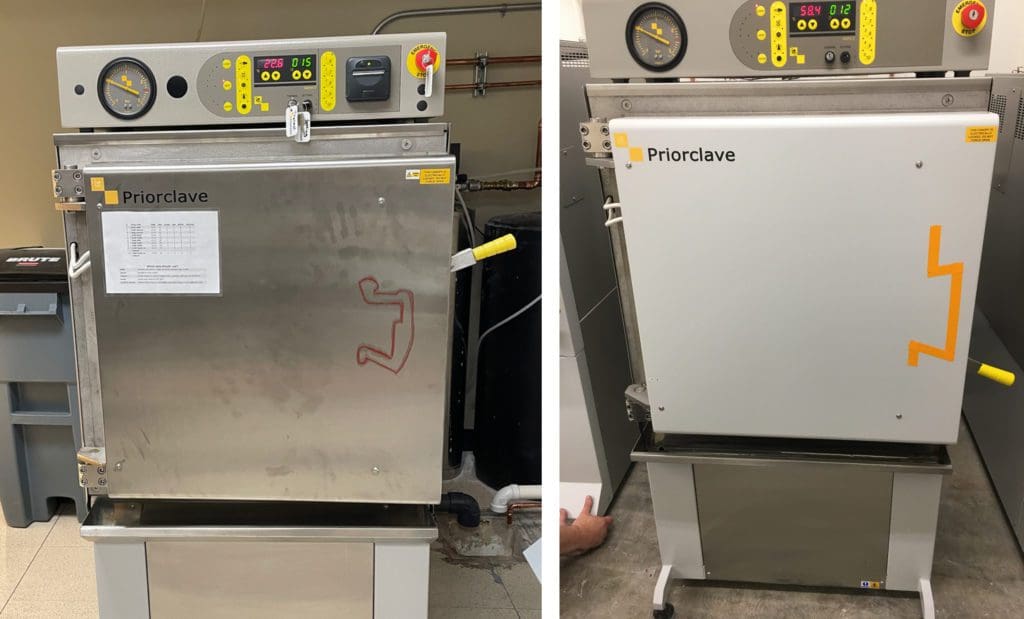“Follow It, Don’t Force It”: How to Easily Open your Priorclave Door
By: Priorclave
Category: Lab Practices

Priorclaves have a unique door latch that occasionally frustrates new users. Most come to recognize that it is a clever design. Because the door relies on neither a screw/latch closure system nor a power closer, it offers:
- Extreme durability with little maintenance—our solid silicone gaskets last for years with little maintenance and can be quickly replace with an inexpensive standard gasket
- Enhanced safety—The door latch functions as a mechanical fail safe to our thermal lock system; it simply is not possible for the door to freely open if any dangerous residual pressure is present in the chamber
- One-handed operation—The door can be entirely operated and quickly opened with one hand, easing operations on a daily basis and improving lab accessibility
- Reduced Risk in Instructional Settings—Because the door is nearly impossible to open without training, there is almost no risk of students, trainees, or unauthorized personnel making a dangerous mistake
But because this design is less familiar, it can be hard to navigate for new users. Lee Oakley—Priorclave’s Sales Director—has been supplying autoclaves for decades. He’s seen end-users quickly shift from annoyed to converted on countless occasions.
“It really is a superior design, from a safety and usability perspective. The trick is, you want to follow it, not force it. Let the latch almost open itself.”
Open Your Autoclave Single-handed
First and foremost, know that you are not alone! It’s not at all unusual to struggle with the door latch at first. It helps to be able to imagine the internal channel that guides the door latching mechanism. Below you can see a standard front-loading Priorclave with the outer door panel removed:

You’ll start with the locking door handle in its lowest “parked” position. Press and release the DOOR button. The unit will beep. Wait about 20 seconds, until the Door LED lights and the unit beeps again. (During this “safety delay” period the temperature display will show “Hold.” You don’t need to hold the button; just hold on and wait until you hear the second beep.)
Now press and release the DOOR button a second time. This releases the electronic lock (you’ll hear it cycle). The Vent LED will light and remain lit, indicating that the electronic lock is disengaged.
(Don’t try to operate the door latch until the Vent LED is lit! If that light is off, then the lock is engaged. Attempting to force the door latch handle to move while the lock is engaged can jam the door.)
Once the Vent LED is on, you may work the door latch as follows:
Opening the Priorclave Door Latch
- Nudge the latch handle up to free handle from its lower parked position.
- The handle will now spring out into its unlocking position.
- Lift the handle fully upwards to unlock the door. The handle is now in its safety lock position. This allows any residual pressure to escape harmlessly.
- Nudge the handle down to release it from the safety position.
- Slide the handle into the door as far as it will go.
- Click the handle fully upwards to its upper parked position. Carefully pull the door open.
ALWAYS BE CAREFUL when opening the autoclave following a cycle! It will be hot and steam may escape at Step C, when the handle is in its safety lock position. Heatproof gloves and a face shield are strongly recommended.
A Picture is Worth 1,000 Words—and a Video is Worth 1,000 More!
A picture is worth a thousand words and many Priorclave customers choose to temporarily sketch a “map” of the door latch’s internal channel on the outside of their door, as a reminder for new users:

Of course, if a picture is worth a thousand words, then a video is worth at least a thousand more. Here’s Priorclave Service Manager Ranjit Rai—the longest serving and most widely traveled laboratory autoclave service engineer working out of Britain—operating a Priorclave safety door latch. For clarity, he’s removed the door’s outer panel.

